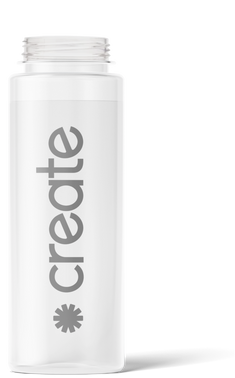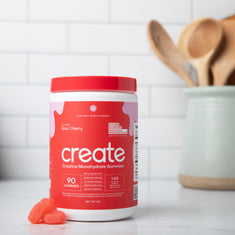Can Creatine Cause Rhabdomyolysis? What You Need To Know
Learn about the potential risks: Can creatine cause rhabdomyolysis? Discover facts, symptoms, and prevention tips. Stay informed with expert insights.
In the world of fitness and bodybuilding, creatine has long been hailed as a game-changing supplement, offering increased strength, enhanced performance, and faster recovery. However, alongside its many benefits, a cloud of concern looms around its potential side effects, particularly the alarming risk of rhabdomyolysis. This condition, distinguished by the deterioration of muscle tissue and the discharge of toxic substances into the bloodstream, has sparked numerous myths and misconceptions related to creatine use.
Let’s dive deep into the science behind creatine, examine the relationship between the supplement and rhabdomyolysis, and separate fact from fiction. Whether you’re a seasoned athlete or a casual gym-goer, understanding the nuances of creatine can help you harness its benefits while safeguarding your health.
What Is Rhabdomyolysis?
Rhabdomyolysis is a severe medical state characterized by the breakdown of muscle tissue, which discharges muscle fiber contents, including myoglobin, into the bloodstream.
This procedure can occur due to various factors, such as intense physical exertion, trauma, or the use of certain medications and substances. When muscle fibers break down, they can cause severe damage to the kidneys, potentially leading to acute kidney injury.
Understanding this condition is crucial, especially for those engaging in high-intensity workouts or using performance-enhancing supplements. It underscores the importance of monitoring physical exertion levels and recognizing the signs of muscle distress. Awareness of rhabdomyolysis can help individuals make informed decisions about their fitness routines and supplementation practices, ultimately ensuring their health and safety.
Symptoms And Diagnosis Of Rhabdomyolysis
Symptoms of rhabdomyolysis can vary from mild to extreme and may include muscle pain, weakness, swelling, and dark-colored urine resembling tea or cola. In more severe cases, individuals might experience confusion, nausea, and even heart rhythm irregularities.
Muscle Pain And Weakness
One of the hallmark symptoms of rhabdomyolysis is the sudden onset of muscle pain or weakness, typically affecting the larger muscle groups in the body, such as the shoulders, thighs, and lower back. Individuals may experience a feeling of stiffness or swelling in the affected muscles, making movement difficult. This pain is often severe and may feel like a persistent ache or cramp. In some cases, the muscle tenderness can be accompanied by muscle spasms, indicating that the muscles are under stress or damaged. Recognizing these symptoms early is crucial, especially for high-intensity exercise or strenuous physical activity.
Dark Urine And Kidney Issues
Another telltale sign of rhabdomyolysis is dark, tea-colored urine, which occurs due to the release of myoglobin from damaged muscles into the bloodstream. Brown urine can mean kidney cancer or other serious conditions, so prompt medical evaluation is crucial. In rhabdomyolysis, high myoglobin levels can lead to kidney dysfunction, potentially causing symptoms like decreased urine output, swelling, fatigue, and confusion, all of which require immediate attention. It is also crucial to understand how much creatine is safe for kidneys before incorporating it into your diet.
Diagnostic Tests And Procedures
To diagnose rhabdomyolysis, healthcare professionals conduct a series of tests to assess the condition. This may implicate blood and urine tests to measure the levels of creatine kinase and to check for electrolyte imbalances. They also assess kidney function and look for myoglobin in the urine. In some cases, imaging studies such as CT scans or MRIs may be recommended to evaluate the extent of muscle damage. It is crucial to detect rhabdomyolysis early to promptly address any potential complications.
Does Creatine Cause Rhabdomyolysis?

Rhabdomyolysis is a severe condition distinguished by the deterioration of muscle tissue that can lead to kidney damage. Many fitness enthusiasts and athletes have heard the warning bells about creatine potentially triggering this severe muscle injury. Still, the reality is often more nuanced than these myths suggest.
Rhabdomyolysis can occur due to various factors, including extreme physical exertion, dehydration, trauma, and certain medications. While creatine itself does not directly cause rhabdomyolysis, there are some situations where its use may inadvertently contribute to the risk if not managed properly. For instance, athletes engaging in high-intensity training without adequate hydration or recovery may put themselves at risk for muscle strain and injury, which could lead to rhabdomyolysis.
Research indicates that creatine is generally safe for healthy individuals when taken as directed and combined with proper hydration and training practices. However, the key takeaway is that individuals should be mindful of their body's signals and the importance of maintaining a balanced regimen. Users need to recognize that using creatine without understanding their physical limits or the demands of their training can lead to issues. However, this is more about how the supplement is used than it.
Role Of Creatine In Rhabdomyolysis
When discussing creatine supplementation and rhabdomyolysis, it's important to understand that while creatine is not a direct cause of rhabdomyolysis, certain factors associated with its use can contribute to the risk.
Dehydration And Heat
One of the primary concerns when taking creatine is its effect on hydration levels. Creatine draws water into muscle cells, potentially leading to dehydration if adequate fluid intake isn't maintained. Dehydration can compromise kidney function and increase the risk of muscle breakdown, especially in hot conditions or during intense exercise. To mitigate these risks, it’s crucial for individuals using creatine to prioritize hydration both before and during workouts.
Muscle Breakdown
Creatine supplementation is often linked to increased muscle mass and improved performance, but it can also lead to intense muscle exertion that may contribute to rhabdomyolysis. When athletes push their limits, especially when combined with high doses of creatine, they may experience muscle strain and breakdown. While creatine does not cause muscle breakdown, the enhanced capacity for intense workouts can inadvertently lead to overexertion and joint pain which increases the likelihood of rhabdomyolysis.
Exercise Intensity
The relationship between exercise intensity and rhabdomyolysis cannot be overlooked. High-intensity workouts, especially those involving eccentric movements or prolonged endurance, can significantly elevate the risk of muscle injury. Athletes using creatine may push their bodies harder, believing that the supplement will protect them against fatigue. However, this misconception can lead to overtraining and muscle damage, which can trigger rhabdomyolysis in susceptible individuals. A balanced approach to training intensity, combined with proper recovery, is essential to minimize these risks.
Individual Variability
It's important to recognize that not everyone reacts similarly to creatine or exercise. Genetics, overall health, and pre-existing medical conditions can influence an individual’s susceptibility to rhabdomyolysis. Some individuals may have an elevated risk due to underlying muscle disorders or dehydration tendencies, while others may tolerate high doses of creatine and intense workouts without issue. Understanding one’s personal risk factors and listening to the body’s signals can help mitigate the potential dangers of creatine supplementation and vigorous exercise.
Strategies And Guidelines For Avoiding
When considering the inclusion of creatine in your fitness regimen, it's essential to take proactive steps to minimize any potential risks, including rhabdomyolysis. Here are several strategies and guidelines to ensure safe usage:
Consulting With A Healthcare Professional
Before starting any supplementation, including creatine, it’s wise to confer with a healthcare professional or a registered dietitian. They can assess your health status, evaluate pre-existing conditions, and provide personalized recommendations. This guidance is particularly crucial if you have a history of kidney issues or dehydration or if you're taking medications that might interact negatively with creatine.
Appropriate Dosage And Usage
Adhering to recommended dosages is vital for safe creatine use. Most studies indicate that a loading phase of 20 grams per day for five to seven days, followed by a maintenance dose of 3 to 5 grams daily, is effective. Not exceeding these guidelines is crucial, as high doses can lead to adverse effects. It is essential to read the product label for detailed instructions and stick to suggested usage to ensure you use creatine safely.
Monitoring For Signs And Symptoms
Anyone taking creatine must be aware of the early signs and symptoms of rhabdomyolysis. Symptoms include severe muscle pain, weakness, swelling, dark urine, and fatigue. If you experience any of these symptoms, seeking medical attention is vital. Regularly monitoring your body's responses during intense workouts can help you catch possible issues early on.
Hydration And Nutrition
Hydration plays a crucial role in preventing rhabdomyolysis, especially when using creatine. Creatine can draw water into your muscles, which may lead to dehydration if you’re not drinking enough fluids. Aim to drink plenty of water throughout the day and during your workouts. Maintaining a proportional diet rich in electrolytes can also support hydration and muscle function, reducing the risk of complications.
Complying With Product Safety Standards
Not all creatine supplements are created equal. To minimize risks, choose products that comply with safety measures and have been experimented with for purity and potency. Look for third-party certifications from reputable organizations, which can assure that the product contains what it claims and is free from harmful contaminants. This diligence helps ensure that you're using a safe and effective supplement.
Try Create’s Creatine Gummies Today To Improve Your Fitness Journey!
The connection between creatine and rhabdomyolysis is often overstated. Creatine can improve athletic performance and muscle recovery. Our Creatine Gummies offer an innovative solution for those aspiring for a suitable and enjoyable way to incorporate creatine into their daily routine! Transform your routine and experience the benefits of creatine today—try our Creatine Gummies for a better fitness journey today!











